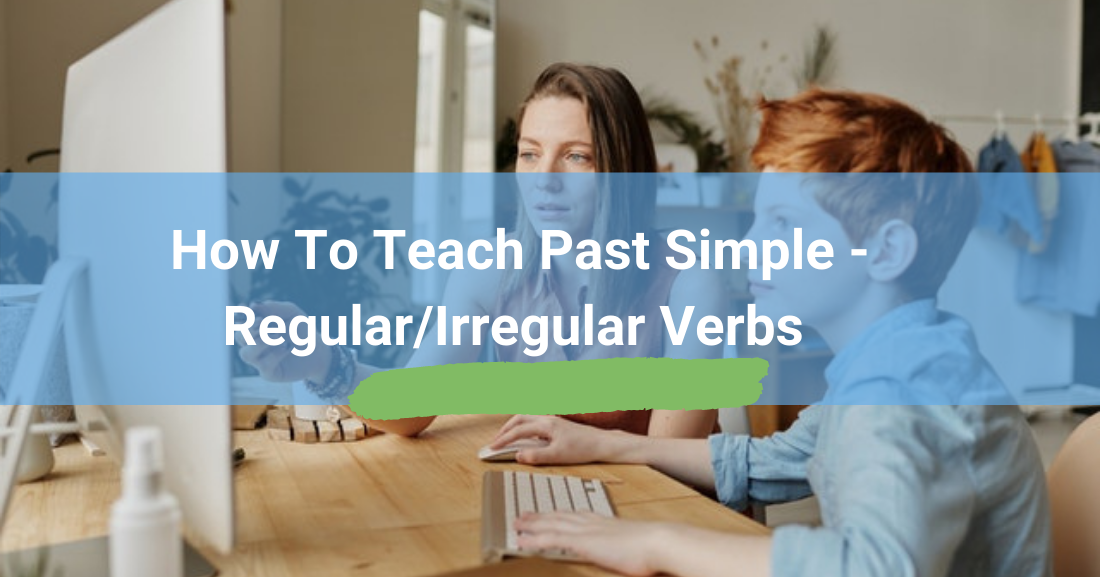How to Teach Past Simple – Regular/Irregular Verbs


“To be or not to be?” is the question pondered by the melancholy Hamlet. On the other hand, an ESL teacher might ask: how do I teach the simple past of the verb to be, without needlessly confusing my students? It’s all rather simple. Follow a step by step process, and don’t move on to next step until you're sure your students have mastered the one you're currently on.
Introduce the Past Simple of the verb to be - First person singular
Begin by asking your students, “Where am I?” They should answer, “You're in class/at school.” Introduce the past simple of the verb to be like this:
T: Yesterday at this time, I was at home.
Go around the class, and have students take turns saying where they were the previous day in the first person singular.
Introduce the Past Simple of the verb to be - Third person singular
Go around the class and say where each student was, giving examples in the third person singular: Sarah was at home. John was at the gym. Bobby was at a friend's house. Etc...Students continue by saying where some of their family members were: My mom was at home. My dad was at work. My sister was at the park.
Introduce the Past Simple of the verb to be - Second person singular
Go around the class and now make statements in the second person singular, addressing each student: Sarah, you were at home. John, you were at the gym. Each student points to one classmate and says where he or she was.
Do the same for the plural persons
Get all of those who were at home together and say, “We were at home.” Do the same for “you (pl.)” and “they”: John and Tom, you were at the gym. Bobby and his cousin were at a friend’s house. They were there till 6 pm. Give as many examples as needed to make sure students grasp the conjugation.
Introduce the Past Simple of the verb to be – Negative forms
Say, “Yesterday at this time, I was at home. I wasn’t at school.” Give more examples alternating between affirmative and negative statements: Sarah, you were at home. You weren’t at the gym. John was at the gym. He wasn’t at school. And so on with all persons, singular and plural. Then have students do the same, always alternating between affirmative and negative statements.
Introduce the Past Simple of the verb to be – Interrogative forms
Model questions like this:
T: Where were you at 10 o'clock last night?
S: I was at home.
T: Ask me!
S: Where were you at 10 o'clock last night?
Continue with more questions from students. Encourage them to ask what time, where, when, why, etc…First, they ask you (second person singular, then they ask classmates, then they ask a classmate about another classmate (Where was Sheila last night?), and so on. Make sure they ask questions in all persons, both singular and plural. If they are unsure as to how to ask a question, model it for them first.
Introduce the Past Simple of the verb to be – Short answers
Ask yes or no questions and teach students to give short answers:
T: Were you at school last night?
S: Yes, I was./No, I wasn’t.
If time allows, ask them to provide more complete answers.
T: Were you at school last night?
S: Yes, I was./No, I wasn’t. I was at home.
Provide lots of extended practice
Try giving your students this worksheet to review what they’ve learned. And here’s another with several exercises, one of which asks students to complete affirmative, and negative sentences, as well as write questions.
For practical purposes, the examples above all cover location (at home/at school). But you may also practice the simple past of the verb to be with feelings (I was happy/sad), the weather (Yesterday was sunny/hot/windy), or opinions (The movie was good/bad/great), just to name a few options.